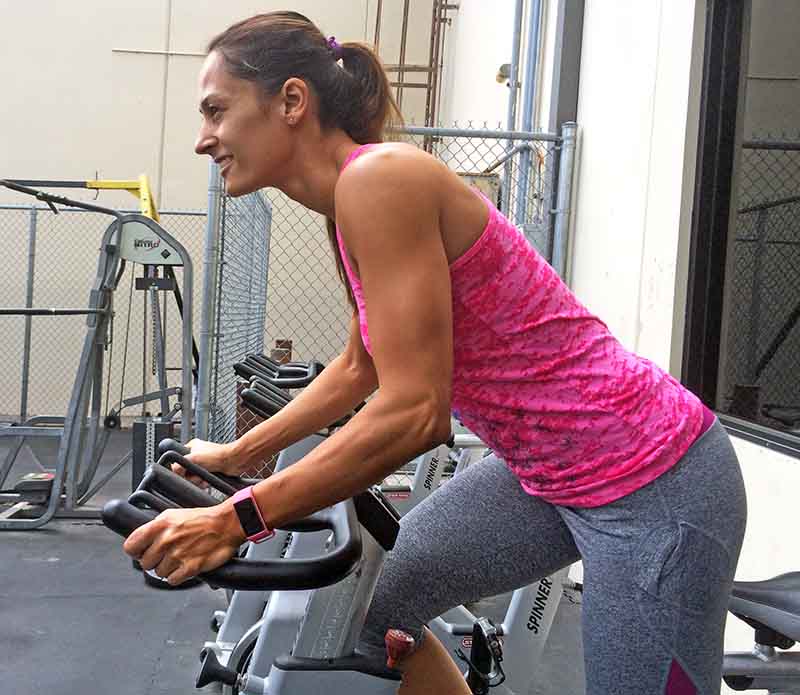Have you ever wondered why your blood sugar falls during certain types of exercise whilst increasing during and types of exercise? Or why you sometimes get high blood sugars after exercise?
If you’re curious about the scientific explanation of how exercise can raise blood sugar, read on.
I rarely come across scientific studies that explore how exercise affects blood sugar in people living with type 1 diabetes, so when I recently got my hands on just such a research paper, I dug in with great interest (they specified type 1 diabetes, but I would think that the results are applicable to anybody using insulin).
Well actually, Google and I dug in. This research paper is heavy reading. You know those scientific papers where you feel like you need an advanced degree (plus a whole lot of Googling) just to understand the introduction? This is one of them.
The paper is titled “Effect of intermittent high-intensity compared with continuous moderate exercise on glucose production and utilization in individuals with type 1 diabetes”, and is written by a team of scientists from Australia. It was published in the American Journal of Physiology – Endocrinology and Metabolism in 2007 (not exactly new research, but peer-reviewed research nonetheless, which means it’s legit).
I thought that the subject was relevant and interesting enough to spend the time reading and understanding it. So, since I’ve done the heavy reading, let me share what I’ve learned with you.
Exercise and blood sugar impact
So why do some types of exercise make our blood sugar drop like crazy while others make it increase or hardly have any impact? I know from my own experience that I really have to watch my blood sugars if I do steady state cardio, while an interval training session will have little impact or even make my blood sugars go up.
It turns out that the main reason why interval training won’t make your sugars drop as much as steady state cardio comes down to two factors.
- Increase in glucose production
- Glucose utilization
Both of these factors are affected by exercise, regardless of the type of exercise you do. However, the scientists found that after 15 minutes, there was a statistically significant difference in the two factors depending on whether the test subjects did interval training or steady state cardio.
They found an overall higher production of glucose, both during and up to 2 hours post-exercise in the test subjects that did interval training when compared to those doing steady state cardio. Glucose utilization was also higher for the interval training group, but it never caught up with the glucose production.
This means that interval training has less of an impact on blood sugars (despite the interval training group putting in more overall work) than steady state cardiovascular training because your body is producing glucose as fast or faster than you can use it.
The scientists don’t know exactly why we see the greater increase in glucose production for interval training, but they theorized that it might be due to muscle glucagon breakdown.
Another finding was that cortisol (the stress hormone) didn’t increase more with interval training. That’s a really positive finding since increased cortisol isn’t something we generally strive for due to the many negative side effects such as weight gain, impaired immune function, and gastrointestinal problems.
How to implement the research findings
Aside from me finding this super fascinating, what can we do with this information?
I think that this is a great piece of knowledge to have for trained athletes, those who are just starting out, and for parents managing their kid’s diabetes. It can serve as a guide when determining the amount of insulin and carbohydrates to safely administer prior to and post an activity.
The scientists compared interval training to sports like basketball and soccer where you have intense bursts of activity. I would add newer sports such as CrossFit, HIIT (high-intensity interval training) and HIT (high-intensity training). It could also be boot camps, spinning classes, or if you just do a lot of cardiovascular interval training and heavy resistance training.
Armed with this scientific knowledge (and a lot of experience), I know that I don’t need to reduce my insulin as much before and after an interval training or a resistance training session (I may even need a little extra insulin(!)), while I will need to make reductions if I do 40-60 minutes of steady state cardio.
For me, steady state cardio can be a long walk, a bike ride, or walking on an incline, Stairmaster or elliptical. With all of these activities, I’ll see an almost instant drop in blood sugars. However, the improved glucose utilization wears off pretty quickly after I stop exercising, so I know to lower my insulin prior to steady state cardio but not after.
To summarize:
- Exercise impacts BOTH glucose production and utilization
- When doing interval training, increased glucose production outpaces your increased glucose utilization
- When doing steady state cardio, glucose utilization dominates production
- Because of this, your blood sugar may rise during and after high-intensity interval exercise, while it most likely will drop during steady state cardio
I hope this post answered the question “does exercise increase blood sugar?” If you want to learn more about managing your blood sugar during exercise, please read my article “How to Manage Your Blood Sugars When Exercising with Diabetes“.
You can read the full scientific paper here: Guelfi KJ, Ratnam N, Smythe GA, Jones TW, Fournier PA.:“Effect of intermittent high-intensity compared with continuous moderate exercise on glucose production and utilization in individuals with type 1 diabetes”: Am J Physiol Endocrinol Metab. 2007 Mar;292(3):E865-70.
If you liked this post about high blood sugar after exercise, please sign up for our newsletter (and get a sign-up bonus) in the form below. We send out a weekly newsletter with the latest posts and recipes from Diabetes Strong.



